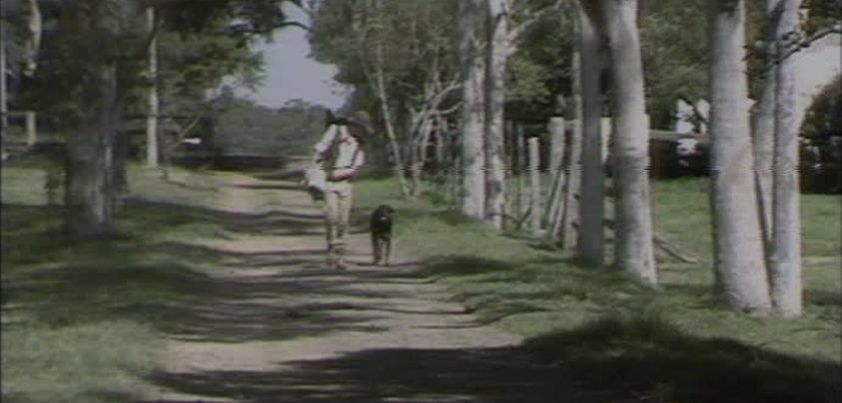 This story by Barbara Baynton paints a graphic picture of the isolation and dangers faced by women living in ‘outback’ Australia during the 19th century. A ‘swagman’ traveling the countryside looking for work visits a woman on a farm whose husband is away. She does not like the way he looks at her, and locks herself and her baby in their house. The man is about to break in when they hear a horse rider coming. The woman runs outside and calls for help. However, when the horse rider hears and then sees her, he races away in fright.
This story by Barbara Baynton paints a graphic picture of the isolation and dangers faced by women living in ‘outback’ Australia during the 19th century. A ‘swagman’ traveling the countryside looking for work visits a woman on a farm whose husband is away. She does not like the way he looks at her, and locks herself and her baby in their house. The man is about to break in when they hear a horse rider coming. The woman runs outside and calls for help. However, when the horse rider hears and then sees her, he races away in fright.
Original Text / PDF (2,772 words)
General Comments
Many people see similarities between this story and another dealing with the life of women in the outback, Henry Lawson’s The Drover’s Wife published four years earlier. Although both deal with the difficulties faced by women in rural Australia at the time, their focus is very different. Lawson addresses the relatively “straightforward” concept of the conflict between man (or rather woman) and nature. Baynton’s story examines the deeper question of the purpose that women are seen to serve in the outback. Are they, as Lawson suggests, almost equals who can be relied on to stand alongside their men in facing the challenges of nature? Or are they, as Baynton suggests, primarily seen as “vessels” to be used for the purpose of receiving a man’s seed and/or producing children?
There are also differences in the way that the men of the bush are portrayed. Lawson presents most of his bushmen as strong, kindly, quite likeable characters. The three men who the poor woman encounters in Baynton’s story each have a major character flaw. Her husband is dominating, cruel and short-tempered. The swagman, who rapes and murders her, could well have serious mental issues. And the rider who leaves her to the swagman is a meek “mother’s boy” too full of religious superstition to realize her danger.
The version of the story presented here is from Baynton’s short story collection Bush Studies, published in 1902. The story first appeared under the name The Tramp in the Christmas 1896 edition of Australia’s The Bulletin magazine. Baynton was justifiably unhappy with the fact the magazine editor chose to cut out the section at the end dealing with Peter Hennessey’s ride into town. This changed the thrust of the story and significantly reduced its dramatic impact.
The edited section was restored in Bush Studies. However, rather intriguingly, Baynton chose to omit the short final paragraph / sentence of the original version: But the dog also was guilty. In the previous paragraph we have a man (presumably the murdering swagman) trying to catch his dog (presumably a sheep killer) to wash blood from its face and neck. The excluded paragraph suggests that either: 1) the man’s dog was guilty of assisting him in the woman’s murder, perhaps by mauling her before or after death; or 2) Baynton is referring indirectly to the woman, whose husband called a “cur” (cowardly dog) at the beginning of the story.
Lawson expresses admiration towards his drover’s wife for her loyalty, bravery and resourcefulness. Baynton’s tone towards her bush woman is neutral. The inference here is that, in choosing to become her husband’s vessel and failing to fight or flee when the opportunity first arises, she may be partly responsible for her fate.